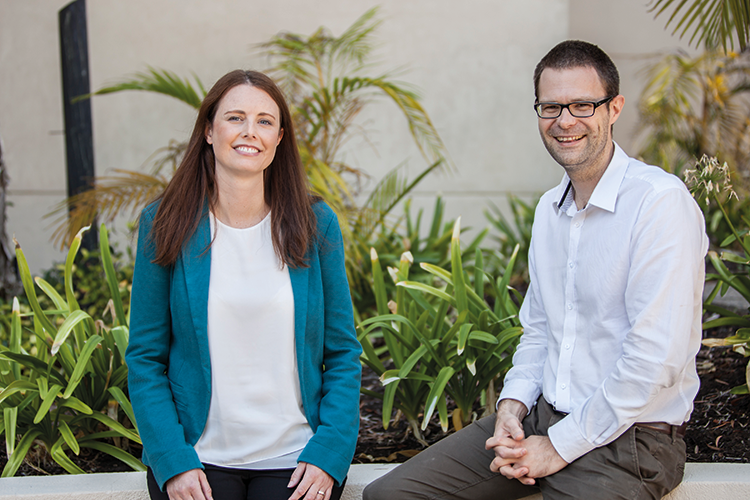
Dr Kiah Evans and Professor Andrew Whitehouse
The time has finally come. Professor Andrew Whitehouse tells how Australia’s first national guideline for the diagnosis of autism spectrum disorder is going to transform the way the condition is assessed and managed, vastly improving the experience for families.
It is the biggest project Angela Wright Bennett Professor of Autism Research Professor Whitehouse has ever undertaken. The head of the Autism Research Team at The Kids Research Institute Australia has submitted the new National Guideline for the Assessment and Diagnosis of Autism to the National Health and Medical Research Council for review, with an anticipated publication date in the second half of 2018.
Approval will give medical professionals across the country a new standard to abide by, eliminating the postcode lottery which now faces families – whose journey to autism spectrum disorder diagnosis and management can vary hugely depending on where they live and the clinician they see.
“The current confusion on the ground seriously damages lives, and if we can find a way to create a consistent national protocol for how you diagnose autism, that will genuinely change the way that many children and their families interact with the health system,” Professor Whitehouse said.
“That’s got to be a good thing.”
The project, commissioned by the National Disability Insurance Agency and Autism Cooperative Research Centre, was based at The Kids Research Institute Australia and jointly led by Professor Whitehouse and Dr Kiah Evans.
The project produced an 80 page document, backed by more than 1000 pages of evidence, that will now spell out recommendations for assessing and diagnosing a child with the neurodevelopmental disorder.
The guideline outlines the comprehensive process for assessment, from the time an individual is referred to the point when assessment results are communicated to the family.
People with autism experience varying degrees of communication difficulties, impacting on their social skills. They may also engage in some repetitive behaviours.
The draft guideline was released for consultation in September 2017, and is the product of the advice of autistic adults, family members, policy makers and clinicians.
The research team engaged with more than 1000 people to learn what could be improved when it came to the diagnosis process, and what was already working.
The new guideline will help families learn about the condition, the impacts it will have on their lives and work out the types of support they need. They will be assured the advice they receive is of a suitably high standard.
“The biggest impact that we hope for is that kids and their families will be provided the most accurate, efficient and rigorous process to commence along the autism journey,” Dr Evans said.
The guideline will also shine a spotlight on the glaring disparity between the recommended process of assessment and the funding necessary to achieve it.
Dr Whitehouse said there was a very strong case for a lot more government funding to enhance the system.
“The current funding mechanisms from the government are not adequate to meet the process of assessment that we describe,” he said.
It was hoped the autism community would now lobby the government to rectify the situation.
“This whole project was done in partnership with medical researchers like myself, and the government agency (NDIA),” Dr Whitehouse said. “And through that we have been able to create something that will create lasting change to practice. That’s a genuinely big impact.”
What's next
The team will be working with key stakeholders to develop a set of web resources to help individuals, families and clinicians to implement the Guideline.
The National Guideline for the Assessment and Diagnosis of Autism
The guideline defines:
- A tiered process of assessment to facilitate accurate and efficient assessment
- The qualifications, knowledge and experience required of health professionals who can be part of the assessment and diagnostic process
- A description of the settings in which an individual must be observed during assessment
- Resources to help health professionals during autism spectrum disorder assessment
